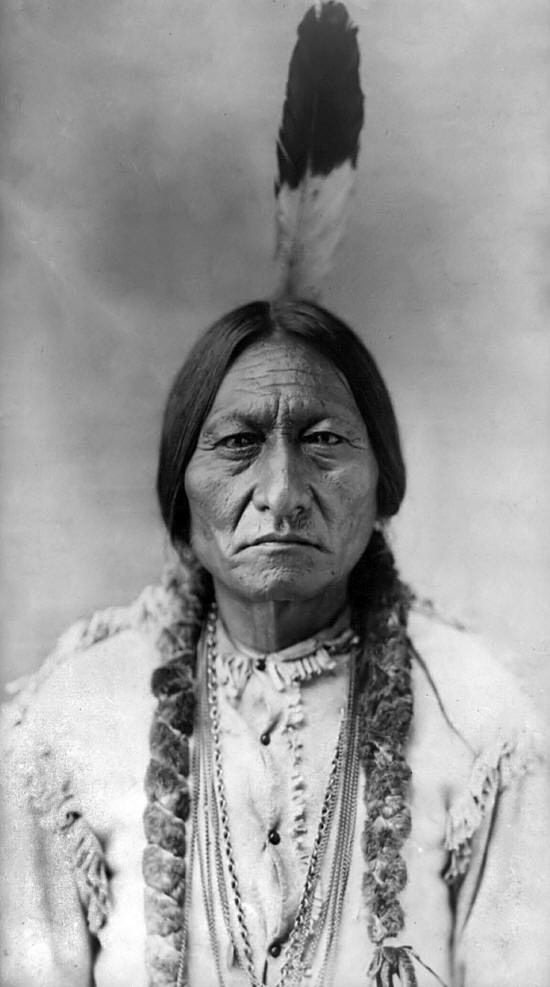|

Chief
Sitting Bull
SITTING BULL (1837—1890), was a
beloved medicine man and chief of the Sioux Indian Tribe.
Chief Sitting Bull was born in about 1837 in what is now North Dakota.
He was the son of
Sioux chief Jumping Bull. He gained significant influence
among the restless and dissatisfied young Indians. During the Civil War
he orchestrated raids on white settlers in Iowa and Minnesota. Though he
had agreed to peace in 1866, from 1869 to 1876 he frequently attacked
whites that had encroached on the traditional territories of the Sioux
Nation. His refusal to return to the reservation in 1876 led to the
campaign in which General George Armstrong Custer, and his 7th Cavalry,
were wiped out at the Battle of Little Big Horn, also knows as "Custer's
Last Stand". Fearing retribution for his participation in the
stunning victory of the Sioux Nation, and Allied Indian tribes, Sitting
Bull with a large band moved into Canada. He returned to the US in 1881,
and after 1883 lived at the Standing Rock Agency. In 1889 a treaty was
made reducing Sioux territory. Difficulties in the working of this, and
religious excitement in connection with the Ghost Dance craze, led to an
outbreak in 1890. Rumors of a coming Indian Messiah who would defeat the
whites, and Indian dissatisfaction at the disposition of their
territory, created such great turmoil in 1889—1890 that the US Army
decided to arrest Sitting Bull as a precaution. Indian
Affairs officials became concerned that would give support to the
movement and decided to arrest him. Attempting to preempt the army, 43
Indian police tried to arrest him at his home on December 15, 1890, at
the Standing Rock Agency. Sitting Bull did not try to resist, but
some of his followers came to his support. As Sitting Bull came out of
his house, a large group of supporters had assembled. One of the men,
Catch the Bear, fired his gun. Sitting Bull was then shot by the police,
killing him.
- - - - - - -
Footnote: The name "Sioux" is an abbreviation of the French corruption
Nadaouesioux of the Algonquian name Nadowesiwug, which means " little
snakes. " The Sioux referred to themselves as Dakotas, which means
allies. The Sioux were divided into seven clans, and the name they often
used was, Otceti Cakowin, which means " the seven council-fires. " There
was a further division into eastern and western groups. The former were
generally agricultural, and the latter skilled horsemen. The Sioux were
ever conspicuous, even among Indians, for their courage and strength.
The Sioux fought on the British side in the Revolutionary War and the
War of 1812. In 1815 a treaty was made with the United States
which granted the Sioux a huge parcel of land, including much of
Minnesota, most of the Dakotas, and a large part of Wisconsin, Iowa,
Missouri and Wyoming. In 1837 the tribe sold all their territory east of
the Mississippi. In 1851 the majority of their Minnesota territory was
sold, but a glitch in the carrying out of the agreement led to an
uprising and massacre of whites in 1857 at Spirit Lake on the
Minnesota-Iowa border. There was peace again till 1862, when once again
the tribe revolted and attacked the white settlers. A terrible massacre
ensued, and the punitive measures adopted were severe. Thirty-nine of
the Indian leaders were hanged from the same scaffold, and all the
Minnesota Sioux were moved to reservations in Dakota. These conflicts
and hostilities led to the most famed battle of the old west, The Battle
of Little Big Horn, where the Sioux defeated Custer. |
